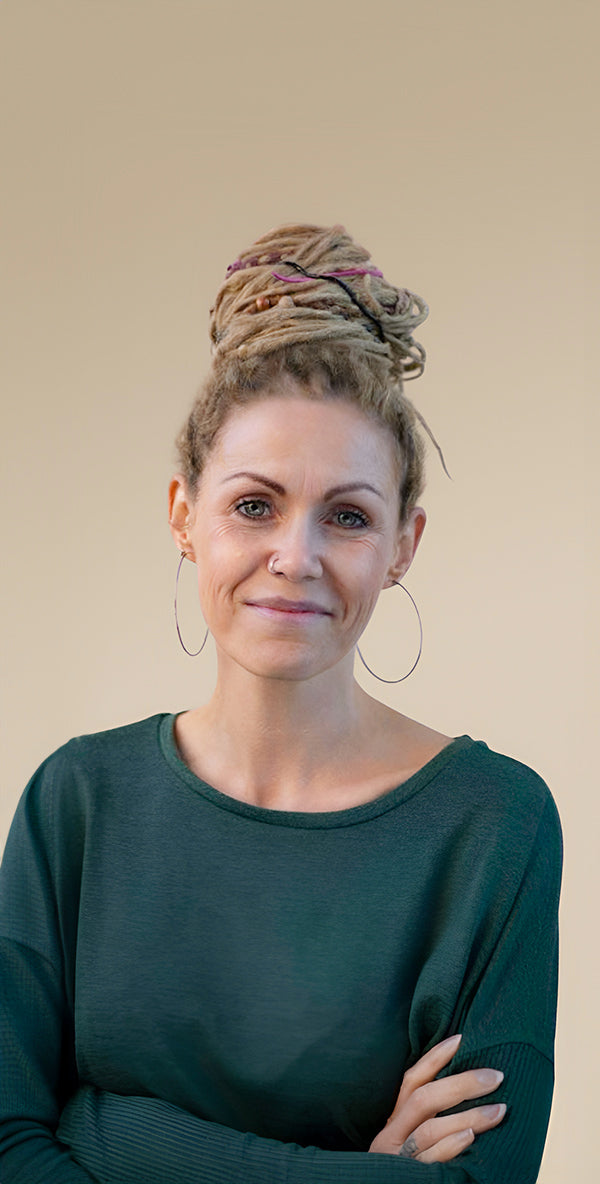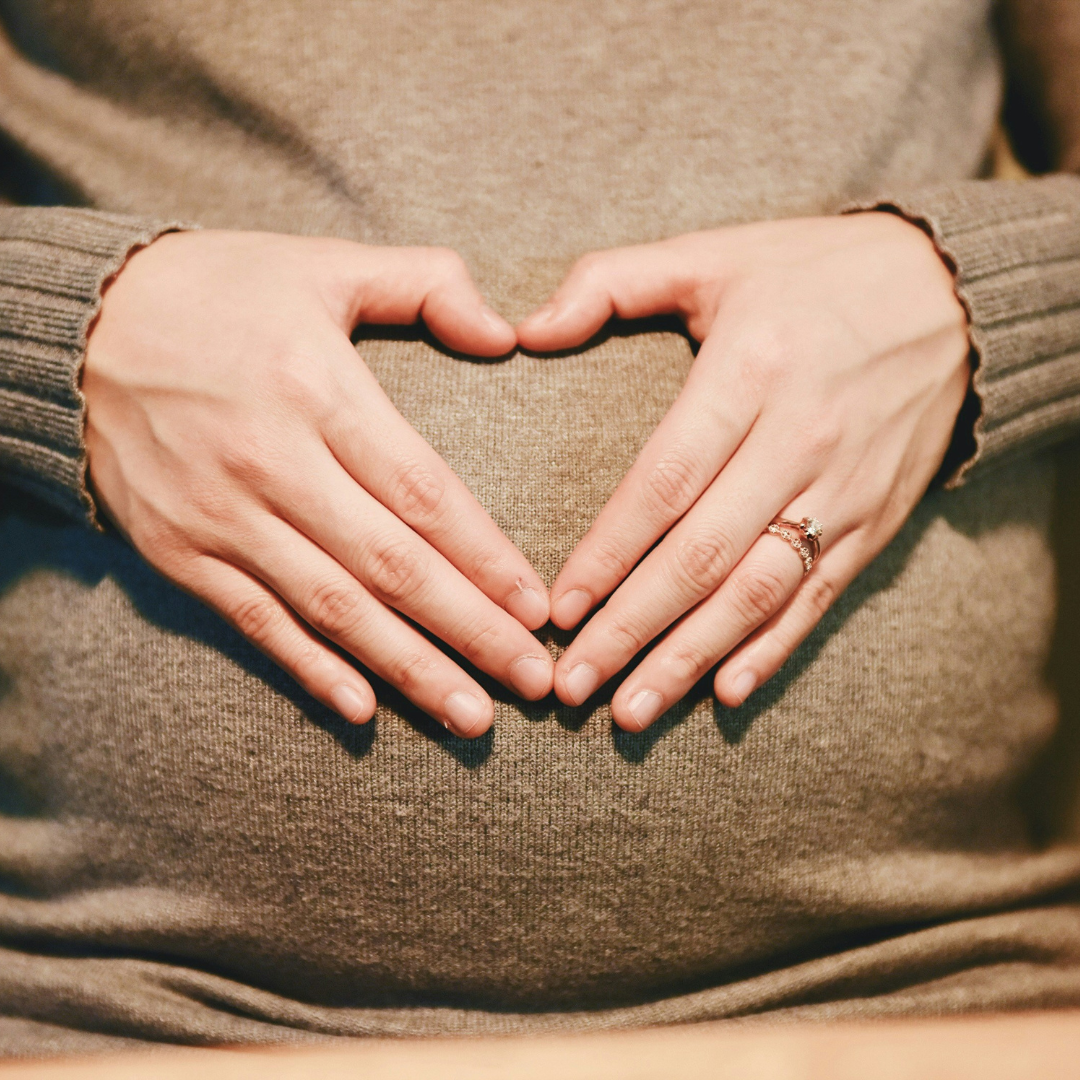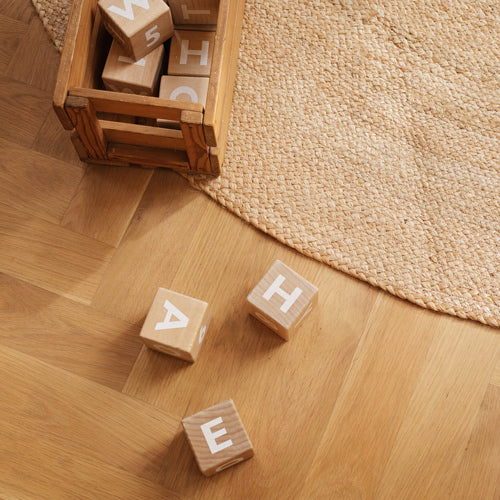


Holding a newborn in one’s arms is wonderful, and parents are in for an exciting journey. Your baby’s development, week by week, is incredible, and you will notice each day how the little one learns new things.
From the first babbling and the first smile to running across the floor ... Many exciting experiences are in store for the child and the parents alike. Here is an outline of your baby’s development during the first year of life.

1 month: crying is the baby’s way of communicating
The first month is fantastic for the proud parents who now need to get to know the new little person. A person who will develop so much through the next few years.
When your baby is 1 month old, crying is a natural part of growing – it is the only way for the little one to communicate with you. Parents with a crying baby may find it challenging, but gradually you will learn what the crying means.
2 months: the sense of hearing develops
While still a fetus, the little darling reacts to sounds and voices. New research shows that a newborn will recognize songs that the parents listened to during the pregnancy, and the voices of siblings and parents are familiar.
When your baby is 2 months old, the sense of hearing is still developing, and you will no doubt notice how junior turns toward sounds. The head and eyes are constantly being oriented toward sounds, and moving the head supports motor skills and helps develop them.
3 months: the first babbling
It feels like a big step forward when baby at 3 months begins to babble. By now, crying is not the only means of communication, and as a parent you may already be thinking about what the first words will be.
To support this development, talk as much as possible to your child. You may copy the child’s babbling sounds, but in addition, you should speak normally to the little one. Bit by bit, junior will imitate your words and facial expressions, and in a few months you will hear the first attempts at making words.

4 months: baby grabs everything
Is your baby 4 months old now? Then you might recognize what’s happening now: Baby grabs everything. Your hair, your clothes, your jewelry – and oh how baby’s grip is strong!
At 4 months, a baby has reached the point where eyes and hands coordinate. This means the little one can reach for things accurately and hold on to them. You may now want to give baby an activity blanket with toys to grasp.
5 months: baby rolls over
Tummy to back and around again. By 5 months of age, junior further builds muscular control and learns to hold up his head as the back and stomach muscles grow stronger. Being able to turn and roll over is the first step towards crawling.
Support the development of the little bundle of energy by engaging in rolling and turning movements with baby, and let the little one stretch to reach interesting toys. That helps develop your baby’s motor skills.
6 months: motor skills get better
What a strong baby! By the time the little one is 6 months old, it’s full steam ahead, and it’s plain to see the improvement in motor skills. Junior is trying to push across the floor, and as the observant parent you are, you see how attempts are being made to crawl.
At this age, your baby may sit in a high chair. In the beginning, let the precious one sit for only a few minutes as the neck and back are still not strong enough to support a sitting position for longer periods.
7 months: baby sits up
Children differ, of course, but in terms of sitting up, 7 months is about the age when you may stop carrying baby everywhere. It’s helpful for you when the little one is able to sit in a bouncer and watch you go about your activities.

To help baby’s development along and strengthen the muscles of the torso, you could place baby between your legs or with a pillow to support the back. Watch that junior’s back does not collapse, and ensure that he cannot fall to one side. ”Train” with baby for short periods only.
8 months: fine motor skills
Do baby’s arm movements look big to you? Gross motor skills are developed by 8 months of age, and the details now begin to unfold. Your precious one is now able to pick up smaller objects and explore small and large objects alike.
At this age, many parents let the child eat independently, as fingers and hands are now able to pick up the food. Even though the result is a messy baby, this helps build motor skills, and a bath soon takes care of any mess.
9 months: full steam ahead
It may be a bit of a job to keep up. New parents find they are challenged to keep up with baby’s rapidly growing skills. Every day, the little one becomes more of an independent person with his or her own personality, temperament, and strength.
Once past 9 months, a baby continues to develop fast. It won’t be long before the little one is ready to walk, and your home should be a safe place to move about. You may want to consider removing any sharp objects, large potted plants, and other items baby will want to explore. Any resulting mess is for you to clean up.



















